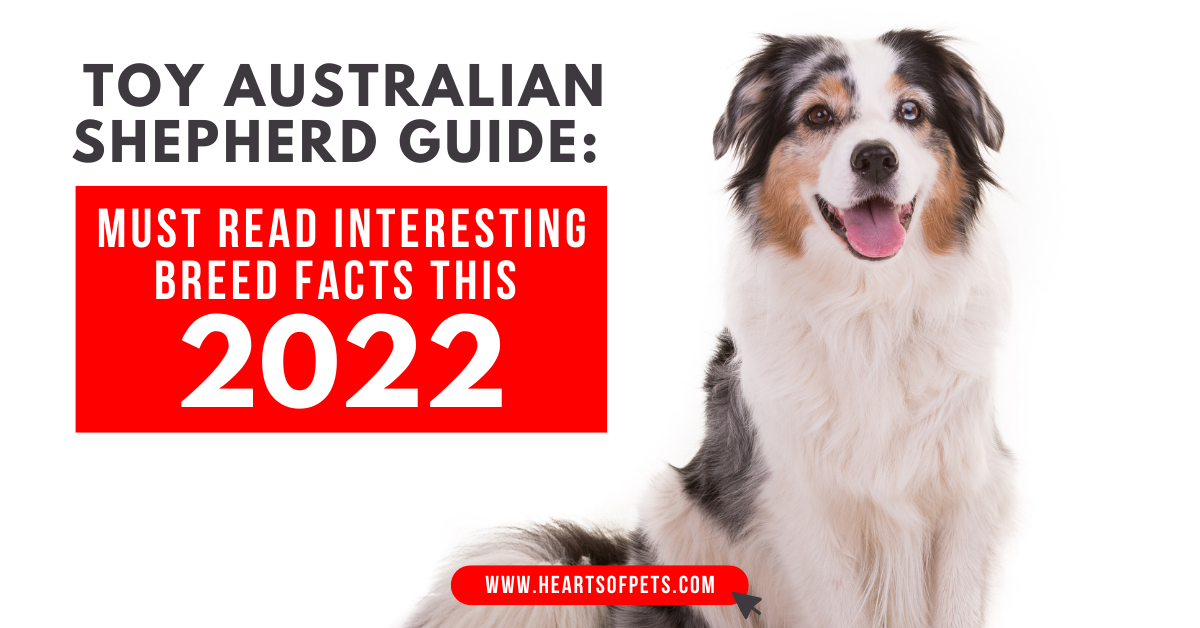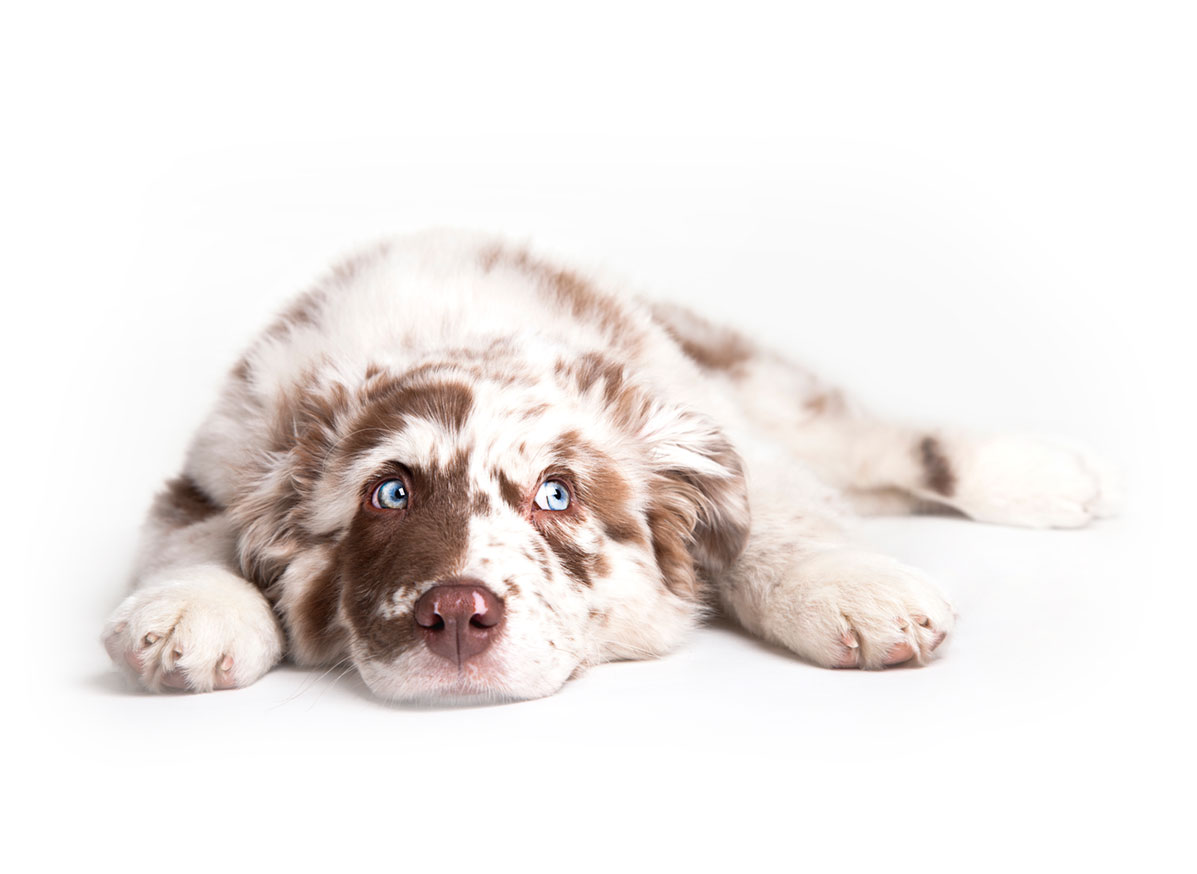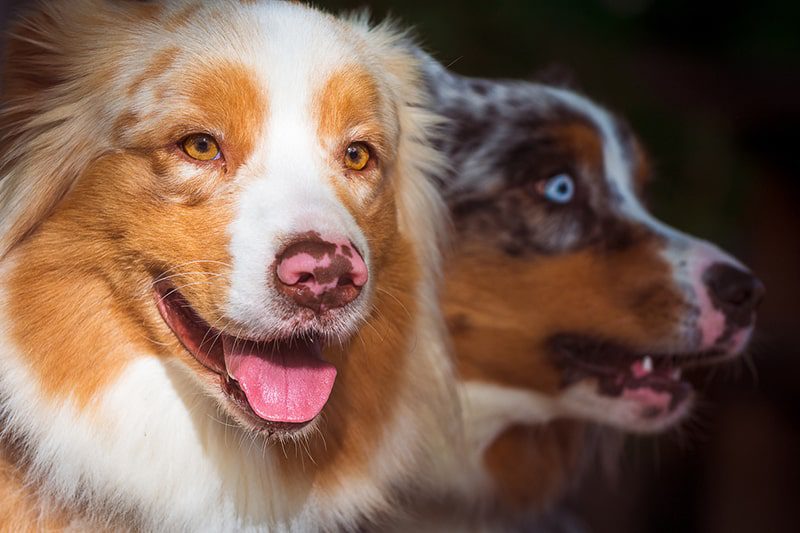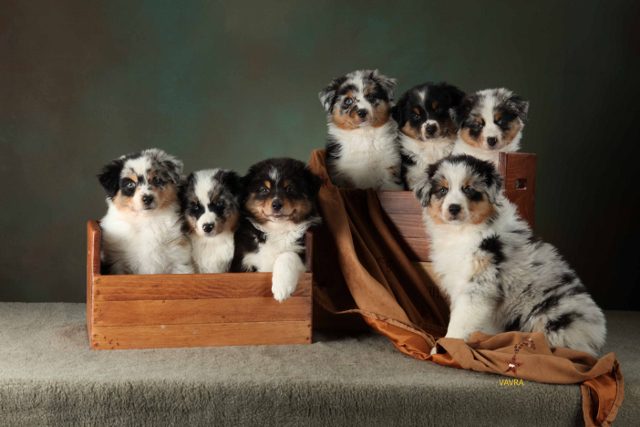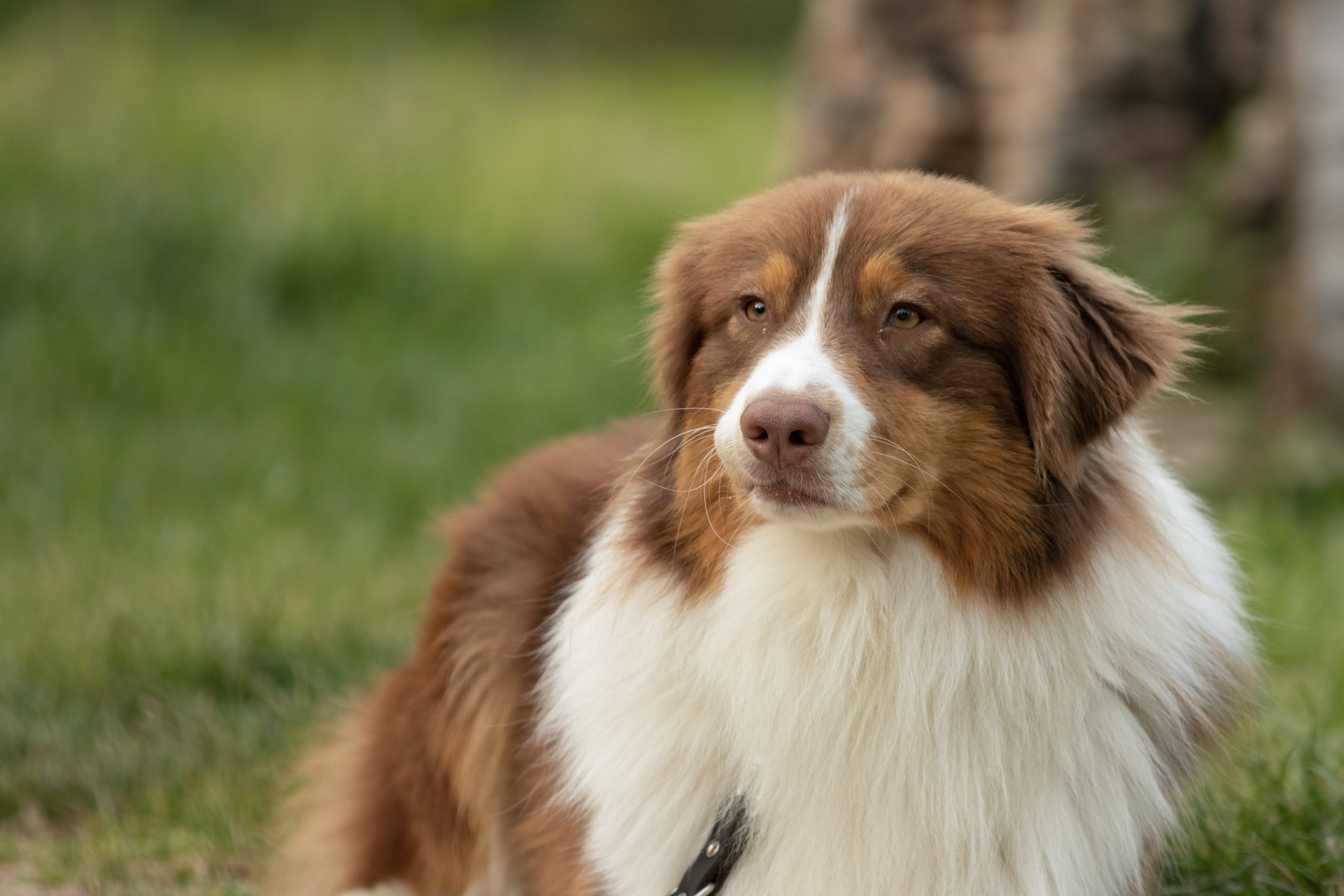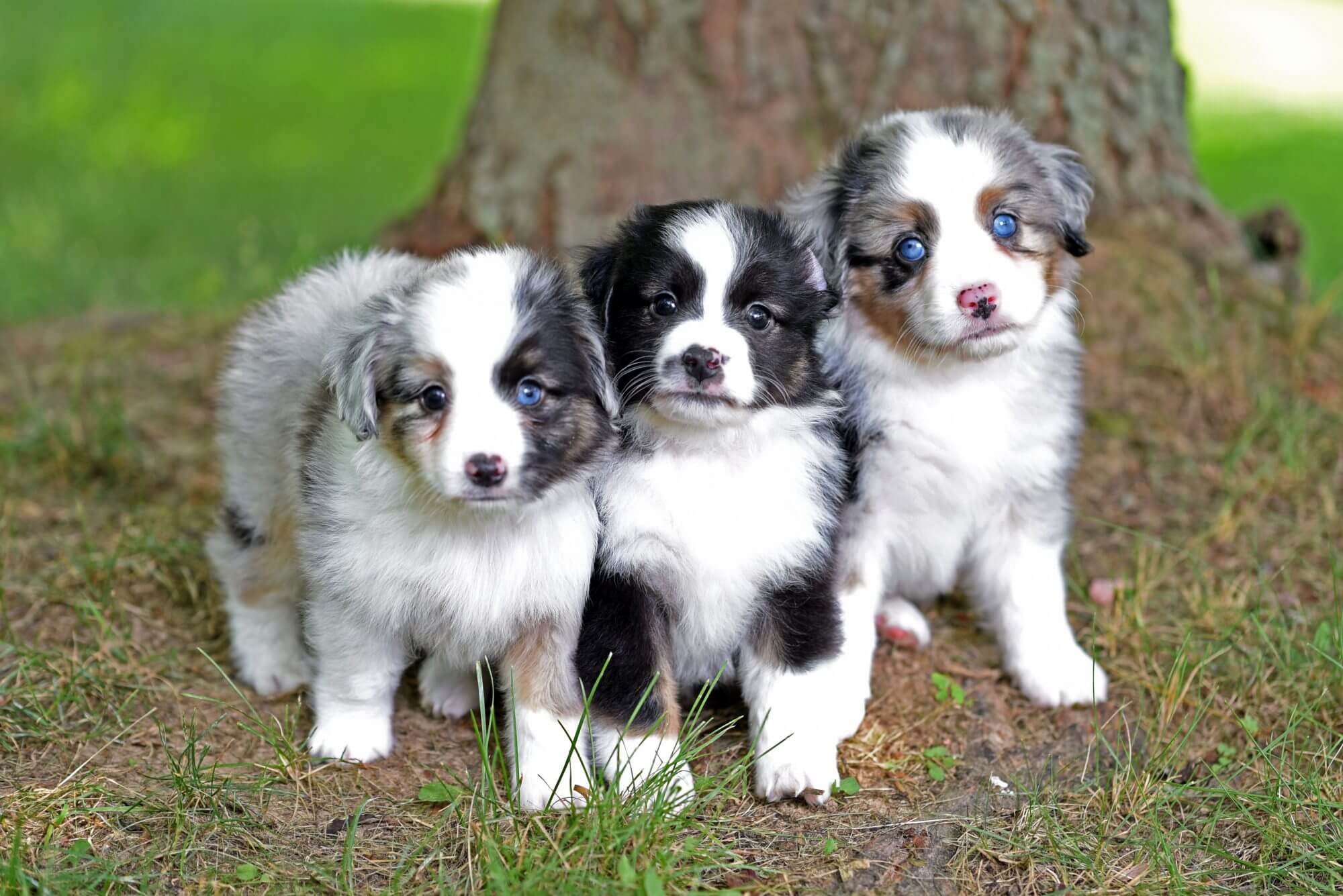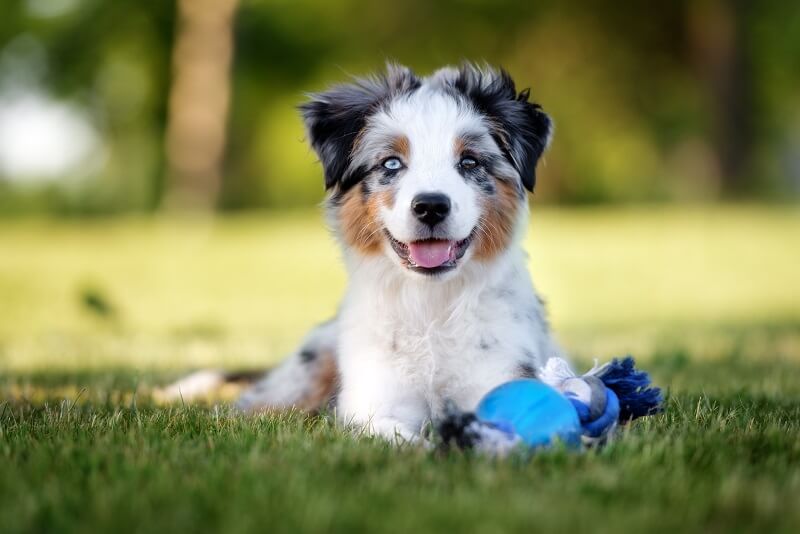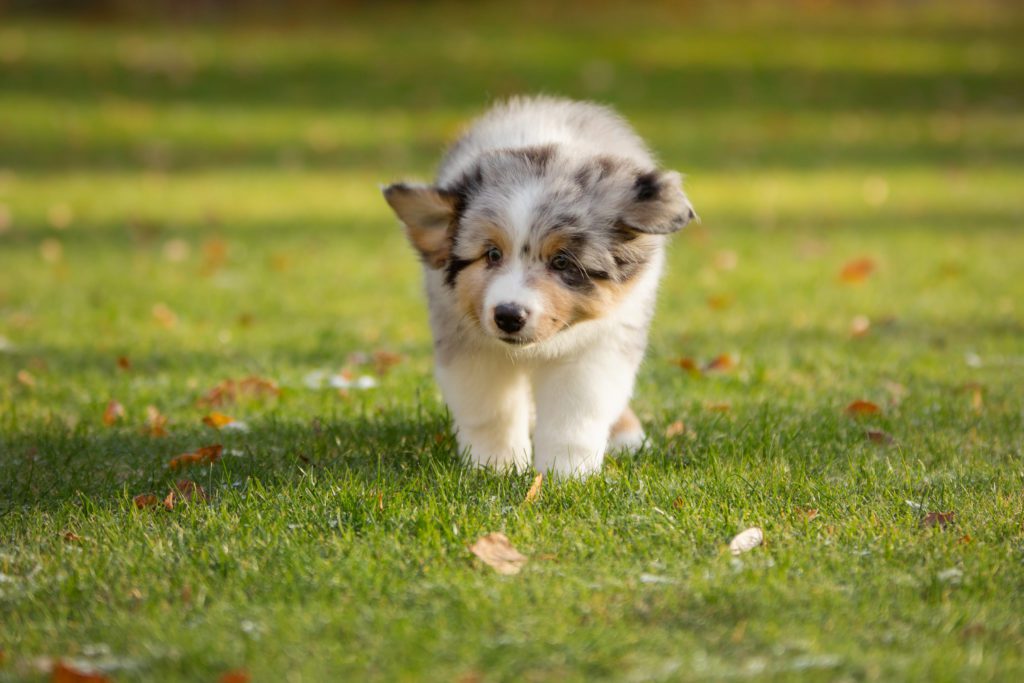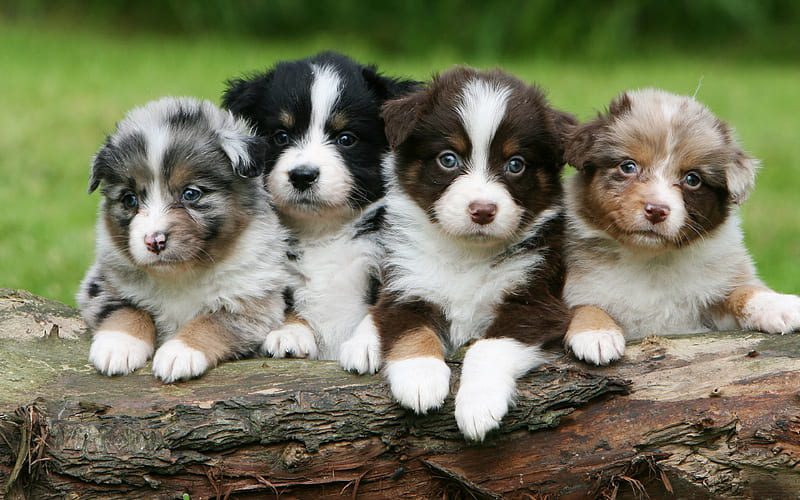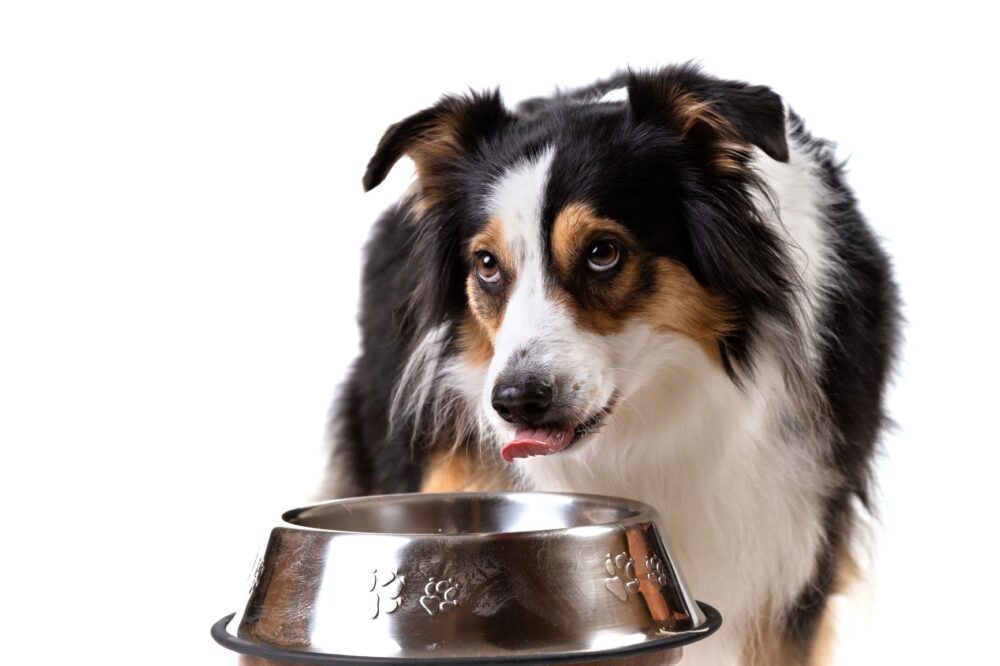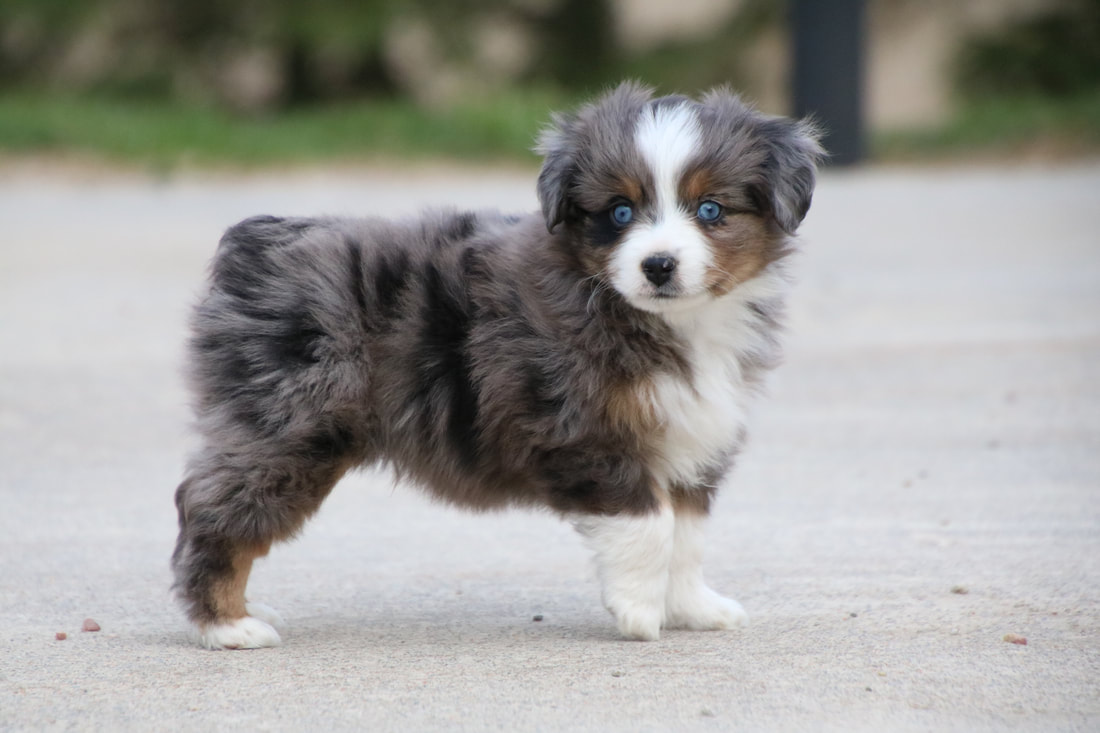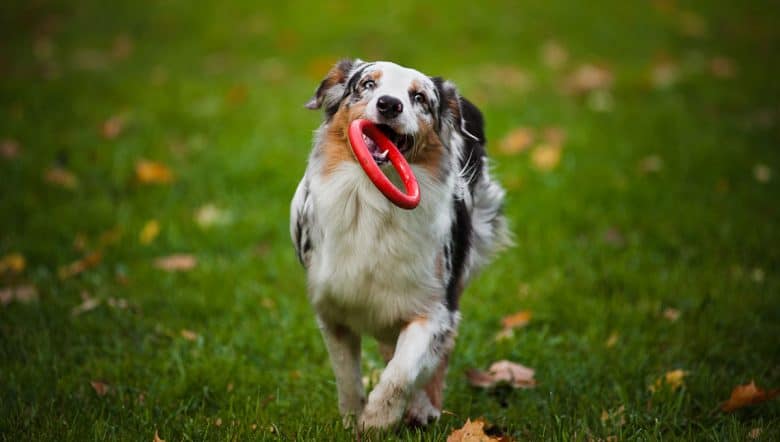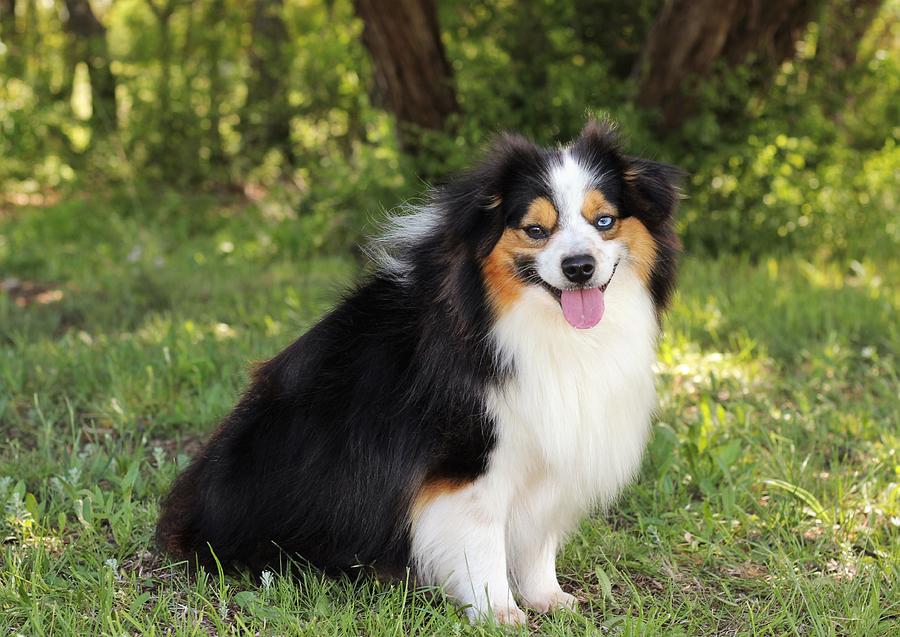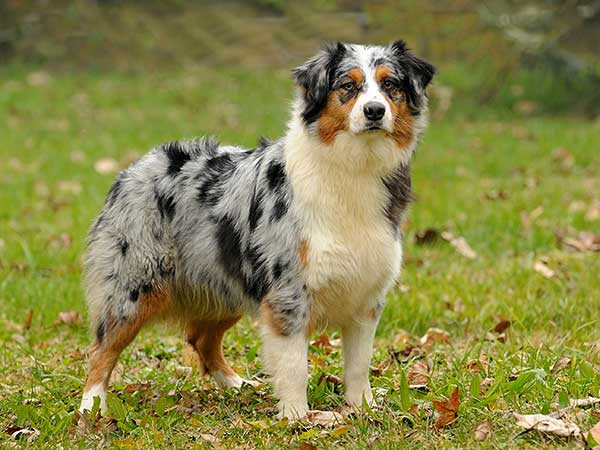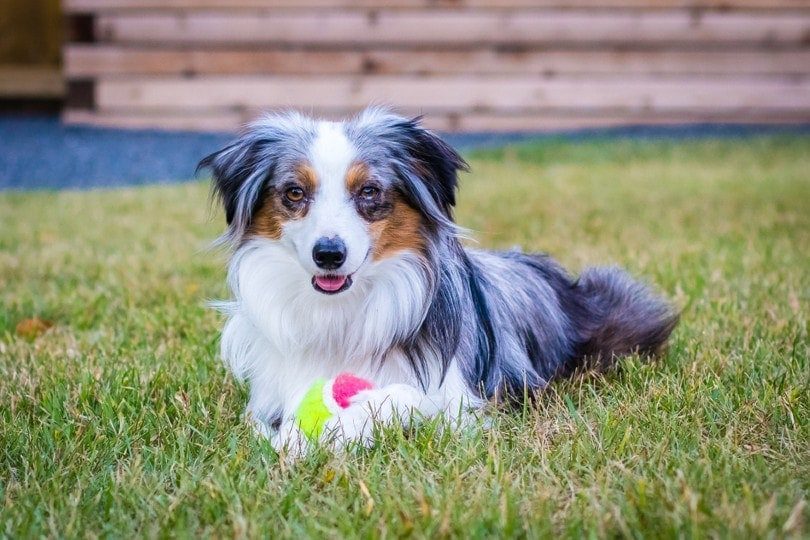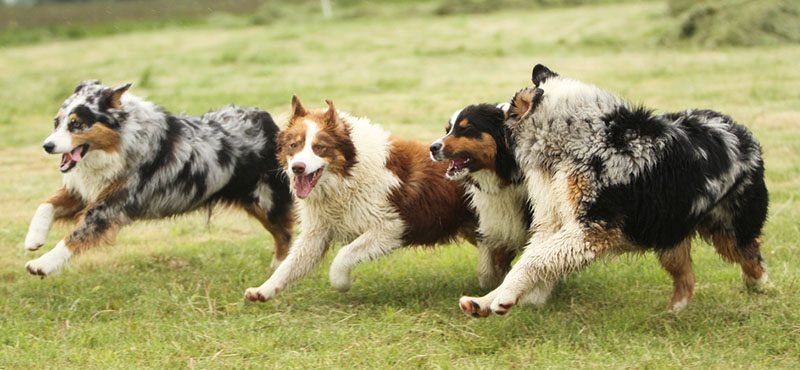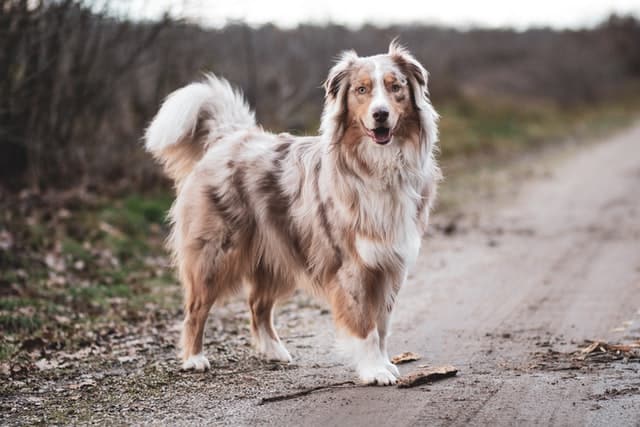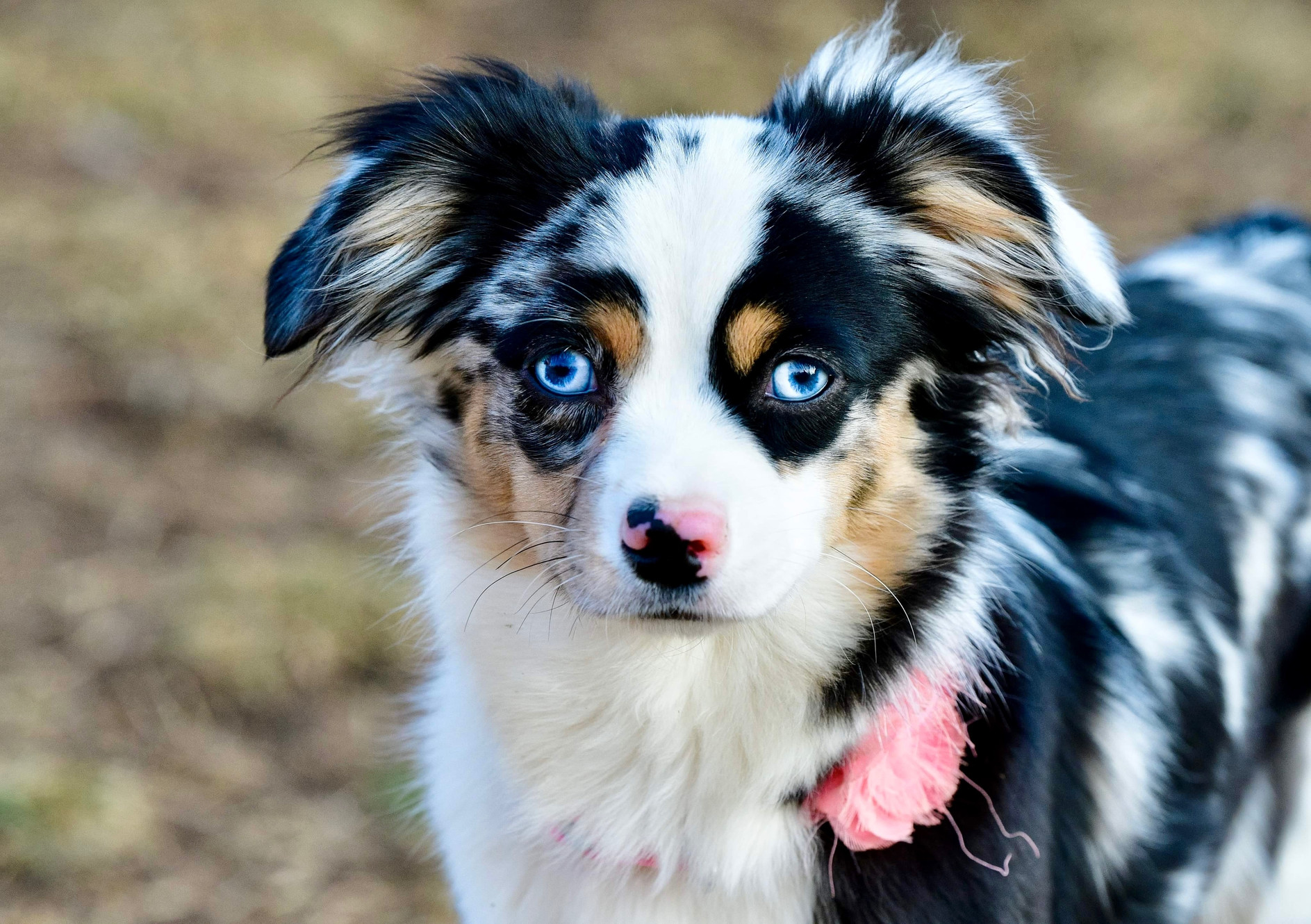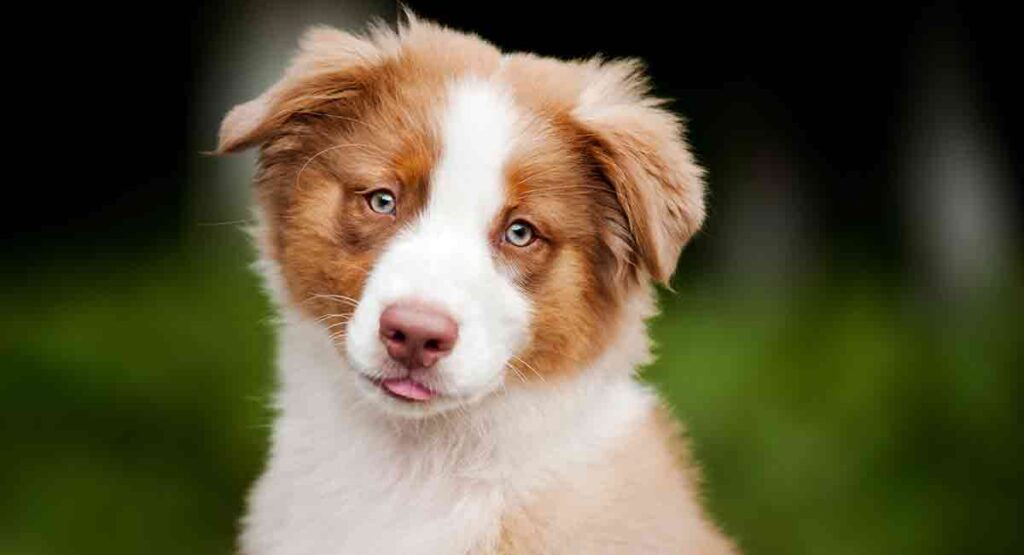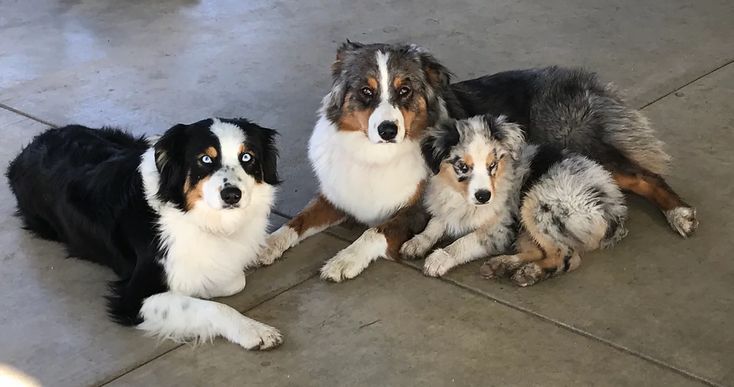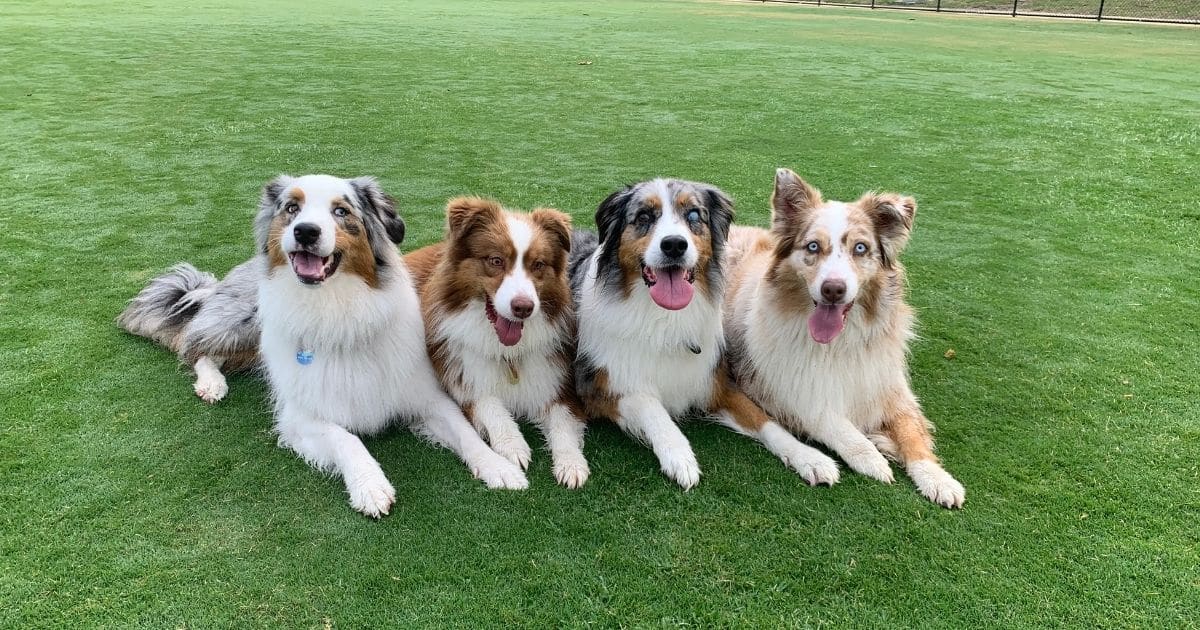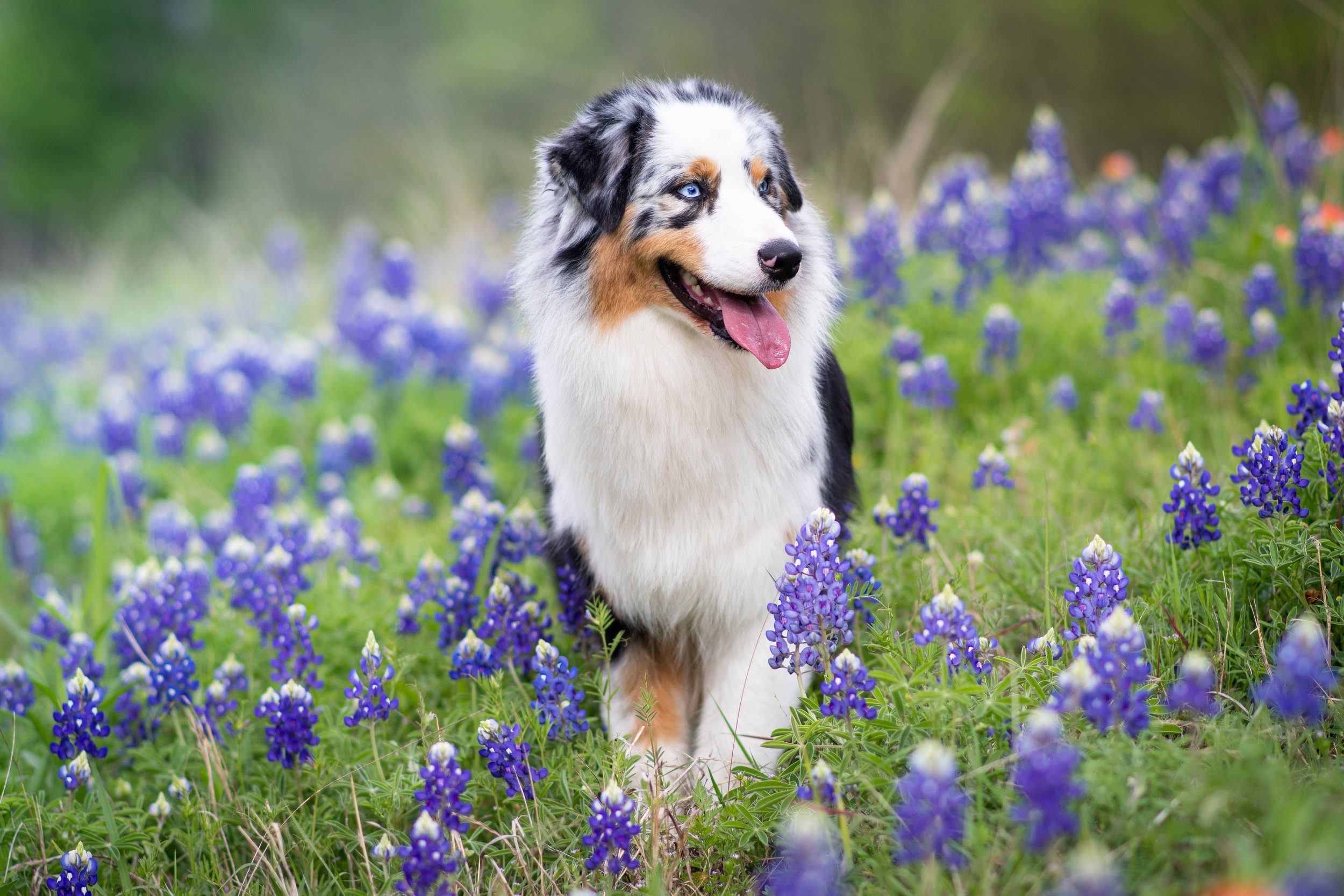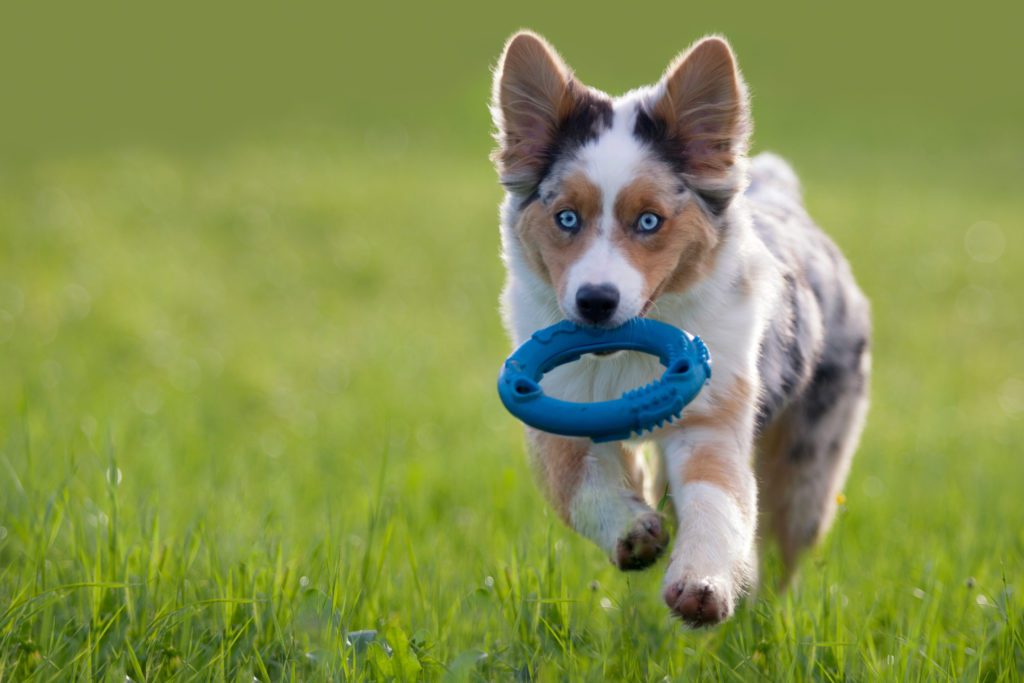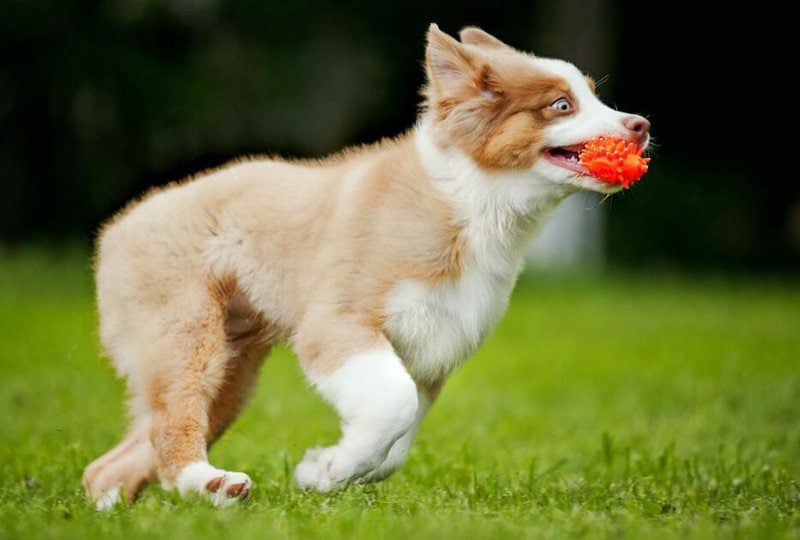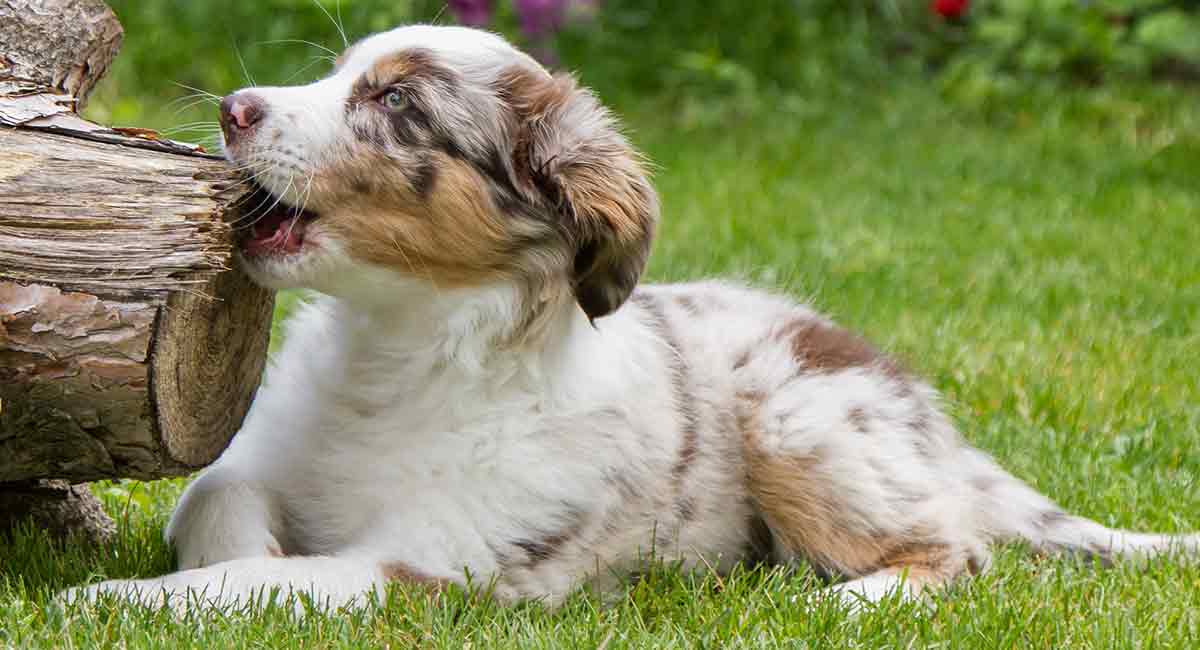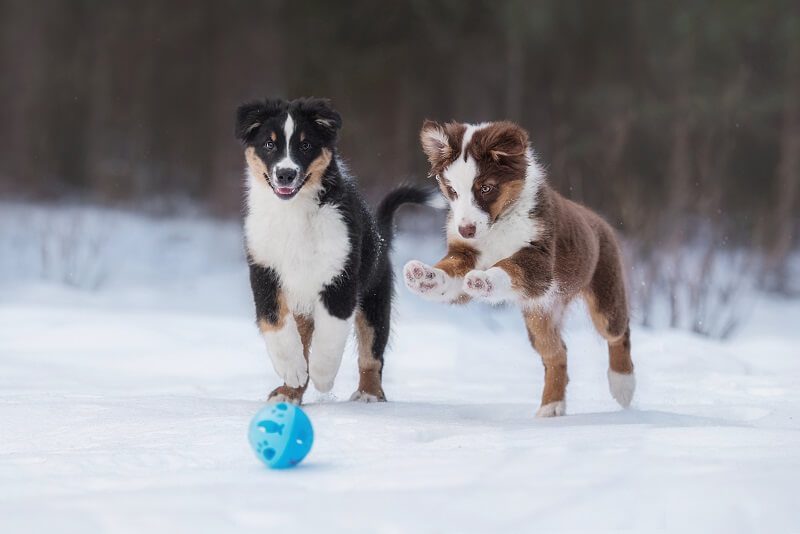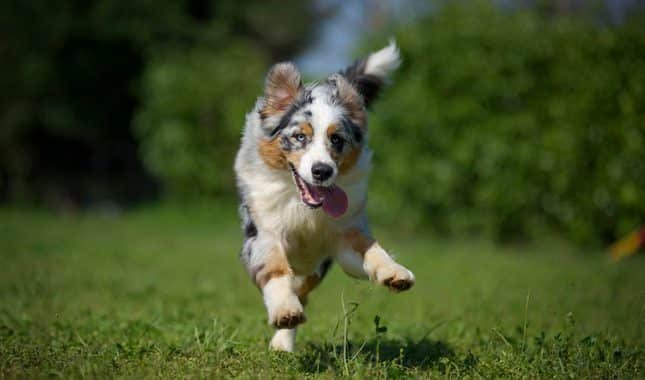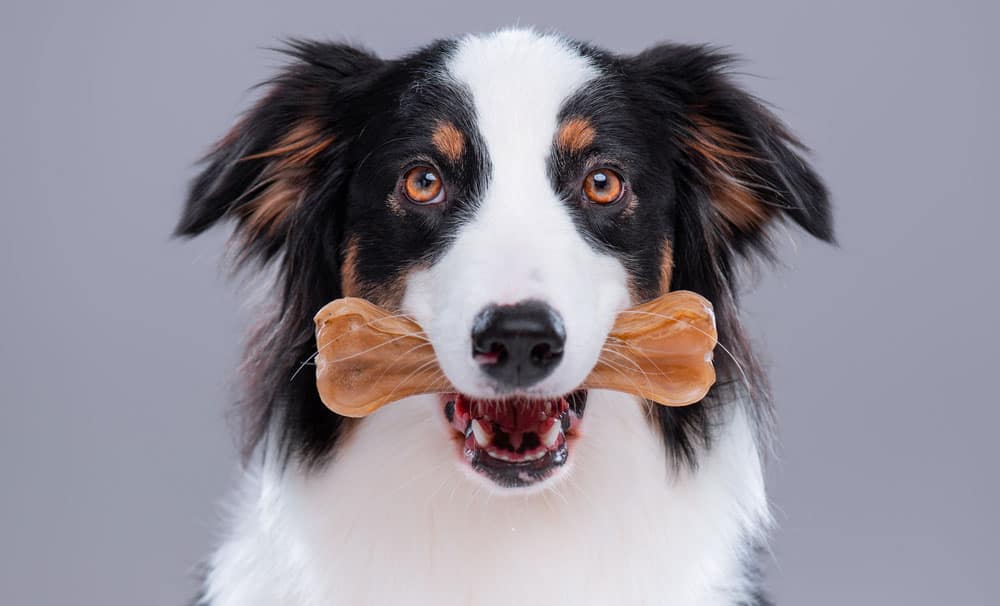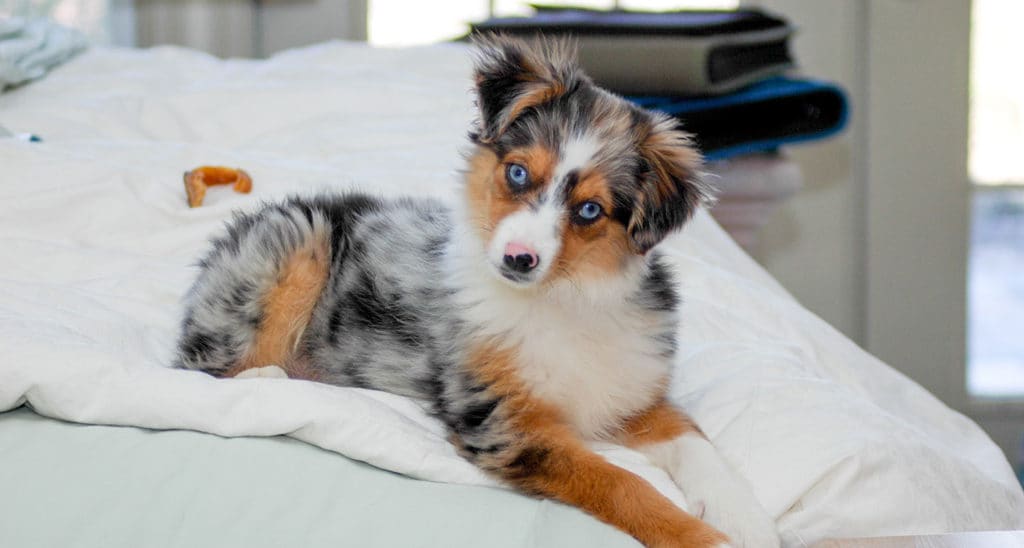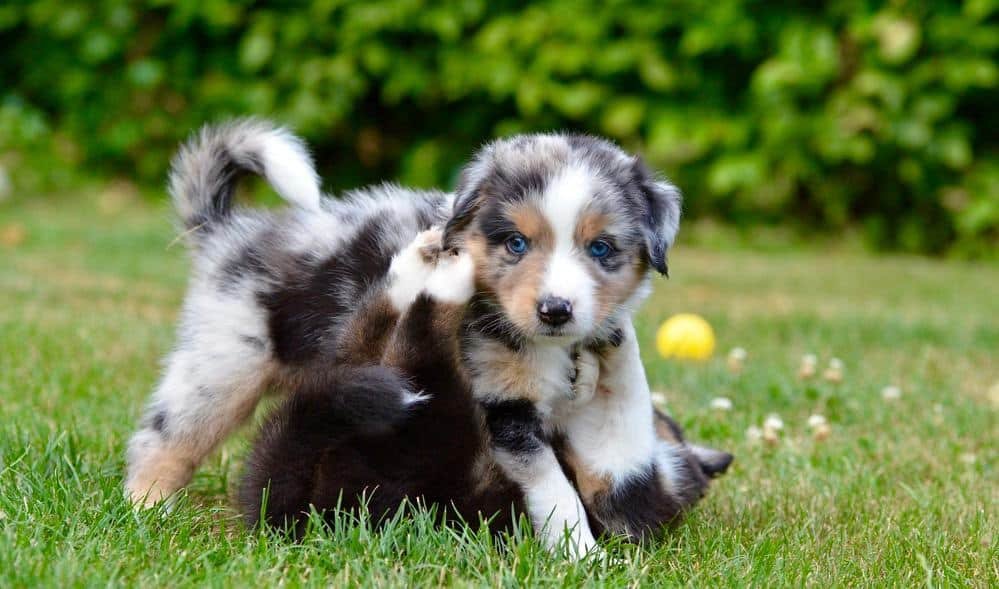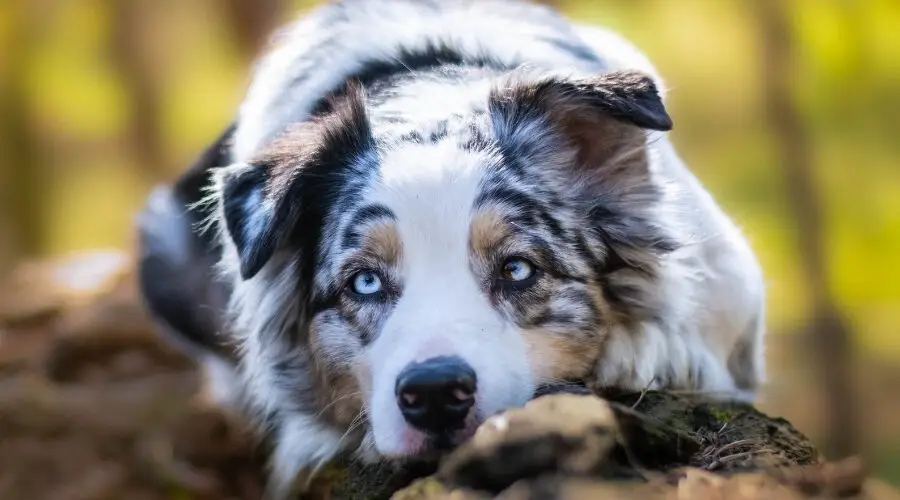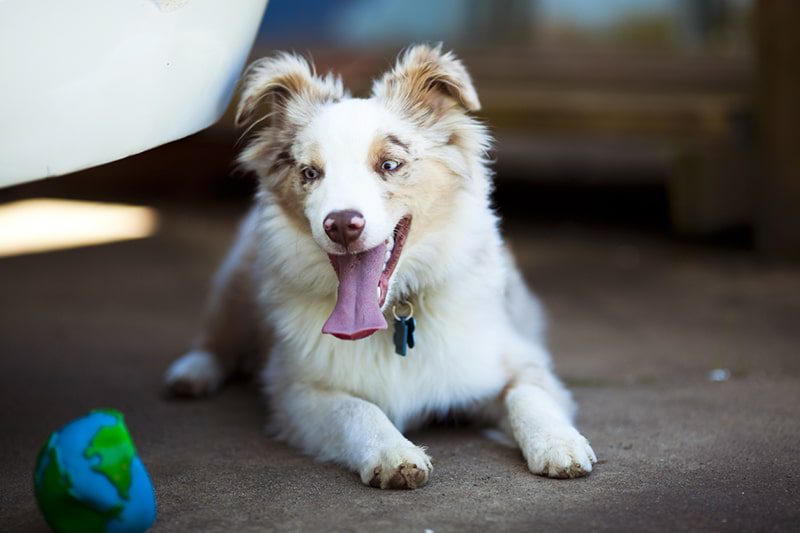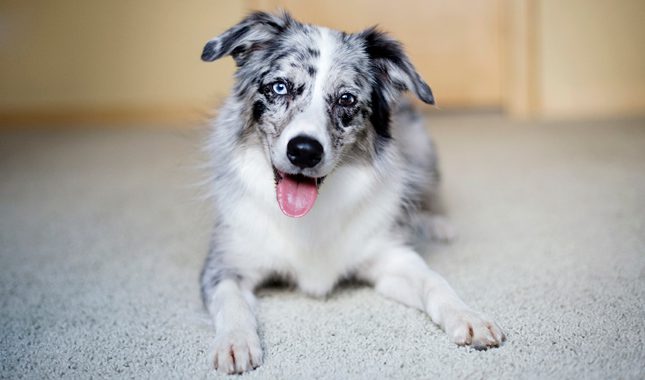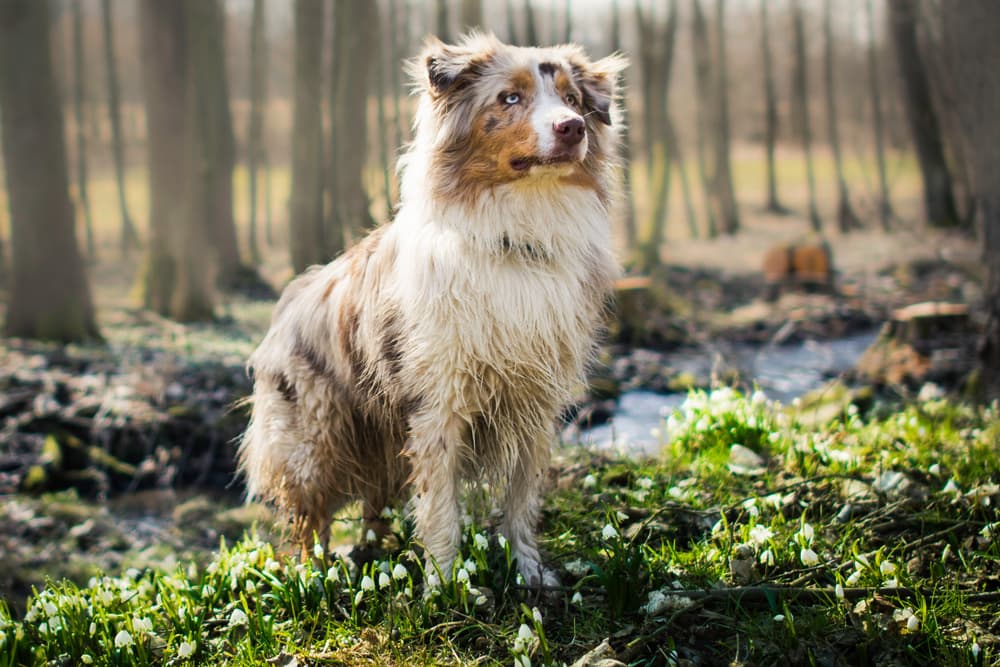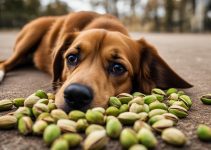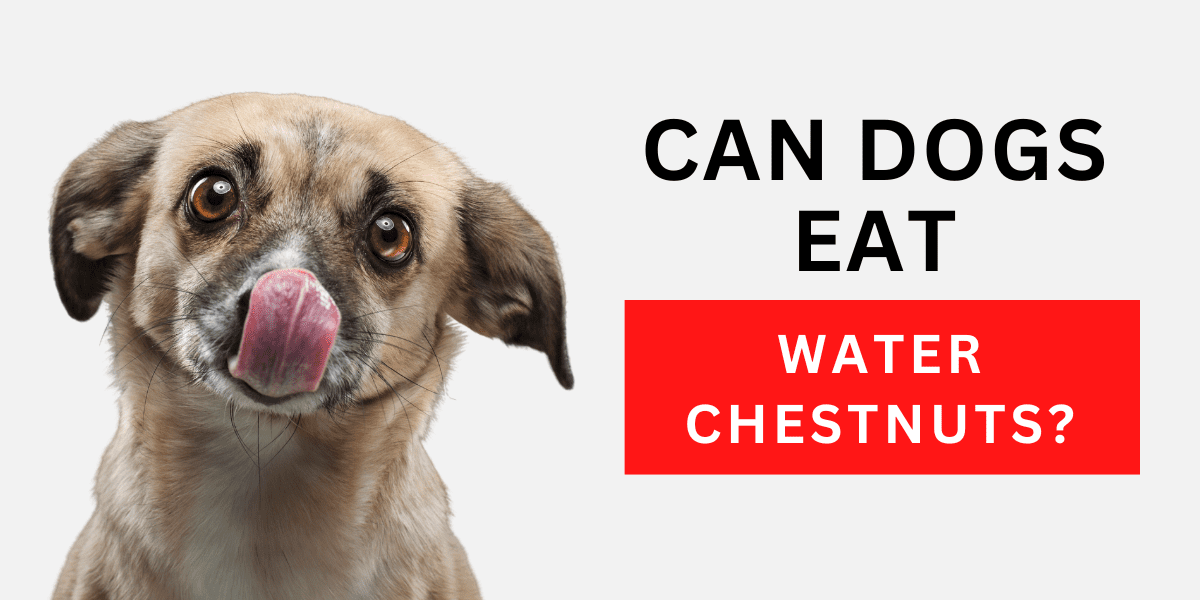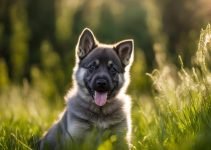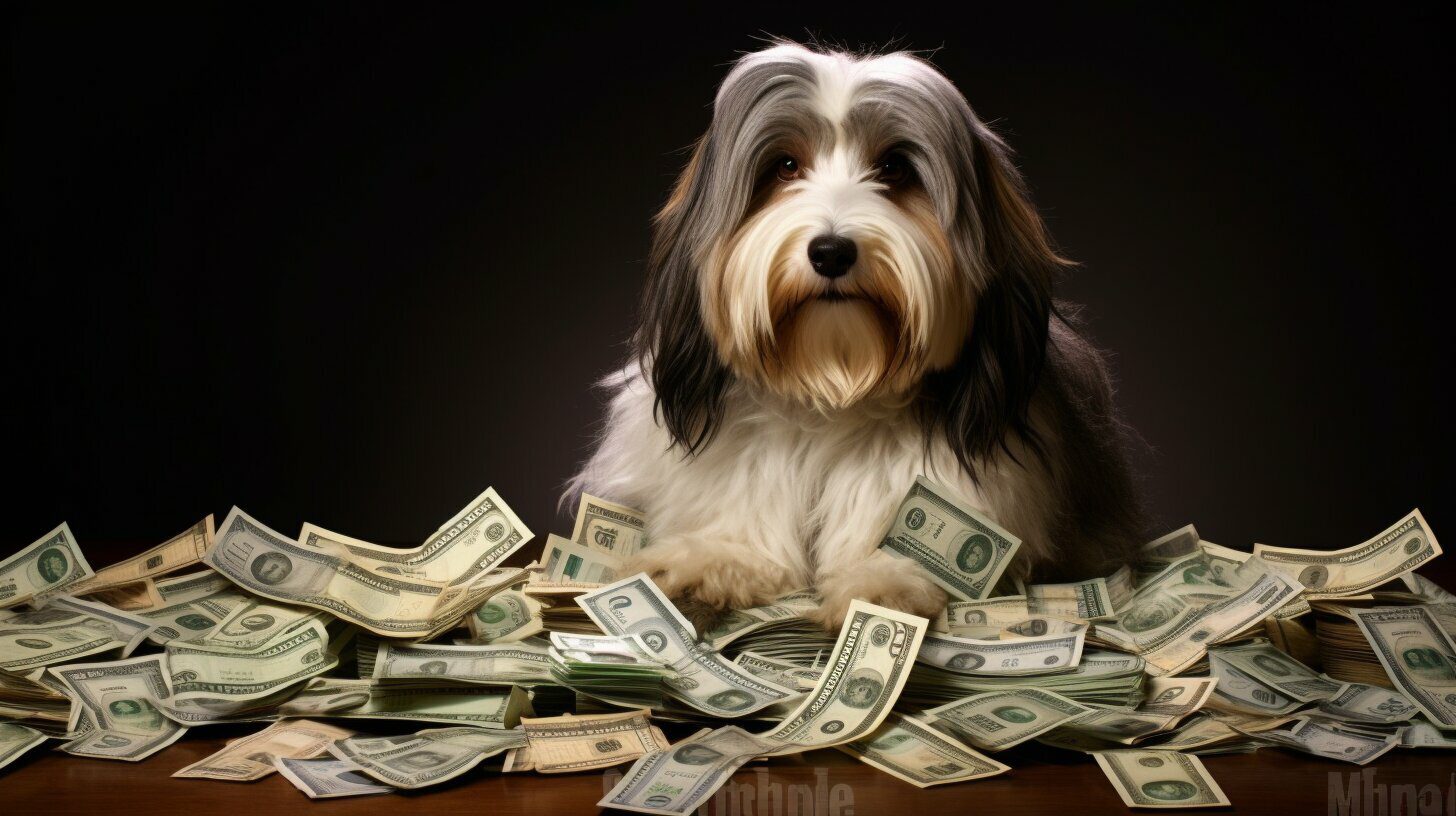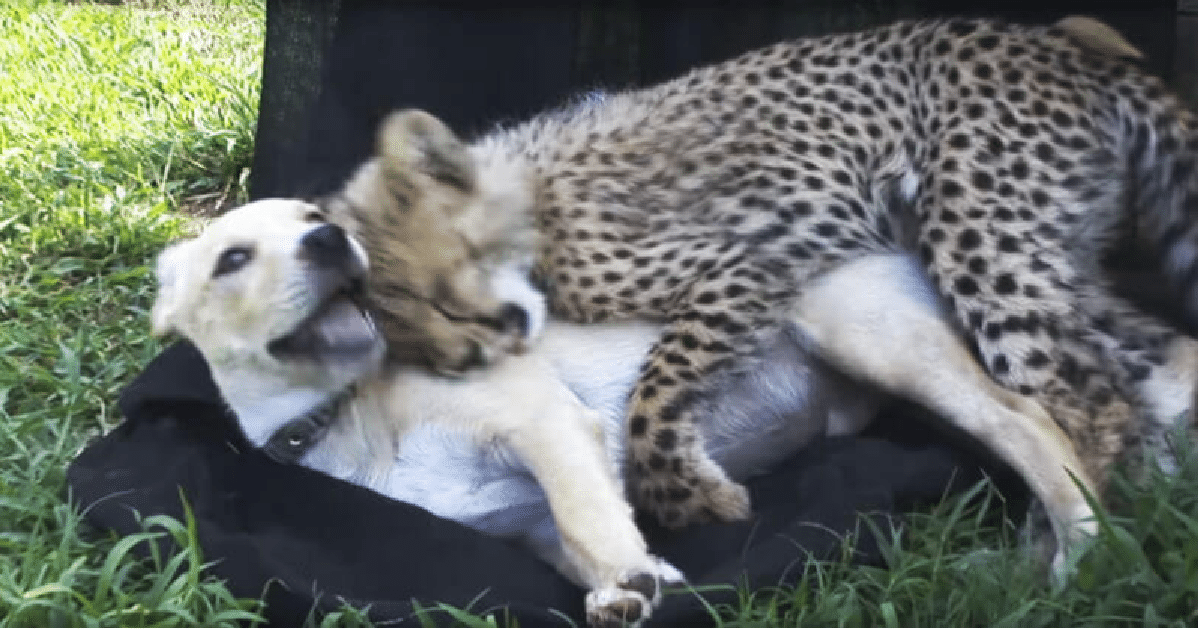Toy Australian Shepherds are a popular breed for a reason – they’re adorable! But there’s more to these fur balls than meets the eye. This breed profile will teach you everything you need about Toy Australian Shepherds. From their temperament to their exercise needs, we cover it all! So if you’re considering adding a Toy Australian Shepherd to your family, read on for the inside scoop.
The Toy Australian Shepherd’s Origin and History
Toy Australian Shepherds are a unique and recognized breed in their own right. Unlike standard-sized Aussie and miniatures, toys have been bred to be smaller than the Miniature version of this pup but share a similar lineage. About half the size of miniature Aussies, these small dogs are perpetual puppies and are growing in popularity among dog owners.
The Toy Australian Shepherd is not actually from Australia. The breed was developed in California, where they are used as sheep herding dogs for farmers. They have traits of many different working species, including Collie Dogs and border collies, with whom they share some similarities to help them work better among the flock.
Jay Lister is a famous rodeo performer who loved his Aussie Shepherd so much that he became an international star. The breed had been virtually unknown outside of farming until then. Still, after performing for crowds all over Australia with tricks like backflips and balancing on one foot while shooting out dung balls from between its paws – suddenly everyone wanted this dog. They are ideal house dogs because of their size and good family dogs, as they are an amiable dog breed with people-pleasing tendencies.
Doris Cordova was a woman from California in the 1960s who wanted to make Aussies smaller for more accessible housing and travel. She began breeding them with her goal of making it happen. This passage talks about how Miniature Toy Australian Shepherd dogs were developed by someone named “Doris, which goes a long way towards explaining why they’re so popular today- because people love little things like this.” Small breeds, on the whole, are more in demand and toy Aussies tend to fit the bill nicely when looking for this size of a companion dog.
The miniature Australian shepherd has a long and complicated history, but it all starts with one woman. In the 1920s, when dogs were becoming more popular as pets rather than working animals, they still had some drawbacks that made them less desirable for many people, including size restrictions on where you could live or go outside, etcetera, due to their small stature, which also meant there weren’t much grooming options either so if your dog needed any work done then this probably isn’t going happen unless its something minor like trimming his nails every few weeks – nothing too major.
According to AKC statistics, the Toy Australian Shepherd is one of the most popular breeds in America, with Aussies ranking 17th out of 193 dog species. But it’s not just their appearance that has led them to be so successful – these clever dogs are also ranked among our top 34 brightest! A toy Australian shepherd puppy is one of the most intelligent dogs you’ll ever meet!
Whether they are being kept as pets or working animals, the Toy Australian Shepherd and its counterpart in Scotland (the Kelpie) continue to be helpful for those purposes. The dogs have been bred over time by a selection of traits that make them perfect companions- intelligent with high activity levels; protective but not aggressive towards humans if given enough room on walks through thick brush where their ding talents can shine from afar.
The Toy Australian Shepherd
Mini Aussies are the perfect “purse dogs” because they’re so tiny! As a result, people have been breeding them even more and creating variations such as Toy Australians. Toys and Teacups aren’t recognized breeds, but their size differences make it easy to tell which one your dog belongs in if he has some breed roots on his lines. Both toy Aussies and miniature Australian shepherds are much smaller than their standard Australian shepherd counterparts. Both belong to the small Australian club.
There’s a thriving industry of tiny dogs in Australia, but they aren’t all created equally. Breeding tactics range from using runts and malnourishment to creating smaller breeds such as the Toy Australian Shepherds, which can be upsized with good breeding practices or crossed with other small doggies for an adorable hybridized pup. Responsible breeders know precisely how to develop these little dogs, while the worst breeders aren’t accounting for dog health when matching parents. Be sure you go with a recognized breeding program rather than a puppy mill.
It’s easy to be confused if you don’t know what a Toy Australian Shepherd is. They look like the real deal, but they’re not – so watch out for scammers who try their luck at extorting money from buyers by saying that these dogs are associated with Aussies when all we have here is just some generic pup.
It’s always best to adopt a puppy from an established breeder with high ratings or find one already at your local shelter. However, if you want the joy of owning Toy Australian Shepherds, ensure they come certified healthy by their respective clubs! The American Kennel Club has lists for people looking where not to be disappointed in what could potentially turn out to be beneath them. At the same time, The Humane Society keeps track of companies who do nothing but mistreat animals which makes it easy as pie (pancakes!).
Personality
The Toy Australian Shepherd is a friendly, intelligent dog that loves to play and interact with people. They are hyperactive dogs who enjoy playing games such as “hide-and-seek” or “fetch.” This breed has been known for its protective nature; the Australians will go so far as to bark at oncoming traffic if necessary!
The Toy Australian Shepherd is an intelligent, energetic dog known for its good nature. They can be vocal because of the working background, but it’s not aggressive or harmful to humans – though they may bark at strangers who come into your yard! The high energy leaves them bored quickly without something interesting going on around, so physical and mental stimulation should occur, along with social interaction every day. Toy Aussies love puzzle toys and participating in dog sports as well. Some basic obedience training is recommended for your Aussie shepherd pup.
Breeding & Puppyhood
Pregnancy can be difficult for Toy Aussie mothers because of the pressure it puts on their little bodies over long periods. For the same reason, dystocia or difficult birth is not uncommon in Toy dogs, and many end up needing cesarean sections. So, breeders should familiarise themselves with the signs of dystocia in dogs and be aware of the nearest vet hospital in an emergency.
It’s crucial to know the history of your pup. Merle Aussies have been known for having dire consequences when bred together, so buyers should always ask about it before buying. Solid red merle or blue merle Aussies may raise a red flag in your head, as merle puppies are rare and may not have been health tested to the degree they should. Reputable breeders know all the ins and outs of mini Aussie breeding lineage, so make sure that’s who you’re working with when seeking the perfect toy Aussie puppies.
How Big Do Toy Aussie Get?
Depending on the gender of the dog, a Toy Aussie can range in size from 12 to 17 pounds and 10 to 14 inches in height. Toy Australian Shepherd dogs are born into litters of 3-5 puppies and weigh 1 -2 ounces at birth.
They grow up to 18 months old but can take two years or more if they don’t get enough socialization while being trained early on about what is considered “naughty” behavior by these intelligent animals that like playing games instead than cowering in fear from an enemy attack as most other breeds would do so.
Appearance
The Toy Australian Shepherd Dog, sometimes called a teacup Aussie, is a friendly, energetic canine that stands 10 to 14 inches tall and weighs between 12-17 pounds. This smaller dog has an athletic build with a beautiful collie-like face, including ears that stand up when they’re listening or alerted of danger!
Their medium-length coat can be found in various textures such as rough necked & feathery back ends on top of legs/tails, similar to other breeds within their family tree, but there will always be some element unique about yours! It may be red merle, solid blue merle, or it could have copper and white markings all over its coat. No two toy Aussies are the same and have unique features that make them stand out.
The Toy Australian Shepherd is a medium-sized dog whose fur can be straight or wavy. They come in many colors such as blue merle (the most common), red/black mixed breed, brown & white combination, but they’re also found in solid black or purebred red!
Toy Aussies can be groomed easily with a stiff bristle brush, which will help smooth their double coat and prevent massive shedding.
The most common markings on toy Aussie dogs are facial blazes, defined eyebrows, and white patches. Red merle or blue merle coats can be mesmerizing with their silver speckles. Some Toy Aussies have a bright blue eye color; finding both traits in one breed is rare.
Are Toy Australian Shepherds healthy?
Toy Australian Shepherd, with an average lifespan of 13-15 years, are generally healthy dogs, but all breeds can be susceptible to certain conditions. Common health problems among these little guys include eye issues like sightedness or color blindness; hearing problems such as Canine Degenerative Myelopathy Disorder (CDMD), which affects the cochlea in your dog’s ear so that it cannot hear properly anymore – even though you may think his/her hearing never had any problem before! Other risks include elbow dysplasia and hip scores rating ” fair.”
The life expectancy of a Toy Aussie
Most standard Australian shepherds live about 12-13 years on average; the more miniature or toy Aussie version has been noted to live between 13 to 15 years. You will get a couple more years out of toy Aussies than a standard Australian shepherd, merely due to size. Large dogs always tend to have a slightly shorter life expectancy than small dogs.
Multi-drug sensitivity
Multi-drug sensitivity is a dangerous condition that can affect many toy Aussies. It’s when mutations in the MDR1 gene cause adverse reactions to common veterinary medications such as antiparasitics and anti-collagen drugs due to their inability or decreased ability to metabolize these substances correctly.
The Toy Australian Shepherd is one breed most likely affected by a mutation that causes hip dysplasia. Upwards 50% percent will inherit this condition, so your toy Aussie pup must get tested before they have any health problems later in life.
Double-merle
Merle coats are the most popular type of coat among Toy Australian Shepherds. Dogs can inherit this merling gene from either parent, but it only results in pups with a slight chance of being born colorful if both parents have two copies each (merles).
If you want a higher chance of breeding merles, some breeders will combine two pure-colored dogs. However, this is incredibly irresponsible and risks the puppies developing severe sight or hearing problems later.
It’s a rare disease that affects dogs, but when two parents carry the red merle or blue merle gene and give birth to offspring with double-merle genes, they have about a 25% chance of developing problems such as going deaf or blind. This makes them “lethal whites” because their coats are so light-colored they can be seen from far away on nights by someone standing near enough during daylight hours.
People sometimes call these toy Aussies “blizzard puppies” since their fur catches every bit of light filtering through cloudy skies and reflects off surfaces.
The Toy Australian Shepherd is an intelligent breed that can handle alternative training methods such as hand signals and touch vocabulary. This makes them great for those who don’t want to use physical punishments with their pup.
Be aware that toy Aussies tend to develop separation anxiety, so don’t leave them alone for long periods. They prefer to be with other dogs or their owners. These dogs bond closely with many dogs, regardless if they’re the same breed or not. Shepherd breeds are generally very friendly toward most other dog breeds. Your toy Aussie will be no different and is agreeable with nearly everyone you encounter, dogs and humans!
Eye problems
It is essential to know the symptoms of Coloboma, which are holes in your eyes’ vision. The Toy Australian Shepherd’s breed can be susceptible because they experience eye problems such as this mutation that causes part or all parts to develop poorly, resulting in poor sight loss over time due to its vulnerability. Though it doesn’t happen in every toy Aussie, it is a bit more common in this breed than in other dog breeds.
Epilepsy
Epilepsy is difficult for vets to diagnose, so owners should keep records of their dog’s seizures. If the vet or doctor asks for additional tests and scans on your pup’s brain area (as could happen), ensure you get them done so they can better determine what kind of treatment would work best in this situation!
Once diagnosed with epilepsy, medication will need to be taken every day until life ends; however long that may be unclear without proper care–it affects neither length nor quality hereof if appropriately treated.
The signs of an epileptic seizure include:
- Short attacks that range from a few seconds to a few minutes
- Irregular attacks that start and finish very suddenly
- Attacks that appear similar and repetitive
- Loss of control while seizuring
Dysplasia
Hip dysplasia and elbow disorders are congenital conditions that mini Australian shepherds can experience. They cause the hip or elbows joints to become loose and wobbly over time, eventually leading to arthritis. There is no cure for it, but they can still manage their condition. Early diagnosis would also delay this progression.
Toy Australian Shepherd dogs with mild dysplasia can live everyday, healthy lives if they make minor changes to their lifestyle. More severe forms may require surgery for treatment, but it’s essential not to let this stop you from enjoying your toy Aussie pup.
The symptoms of hip dysplasia include:
- Loss of muscle mass
- Limping or bunny hopping
- Inability to get comfortable
- Exercise intolerance
- Low mood, sometimes irritability
- Difficulty with activities such as jumping and climbing
- Whining and licking the affected joints
Do Toy Australian Shepherds make ideal family dogs?
Toy Australian Shepherds are the perfect family dog. Like most shepherd breeds, they like to be involved in all aspects of your life and make great playmates for kids! These cuddly little furballs also love other dogs – so you’ll have no problem finding a friend with this toy Aussie pup at home or anywhere else, no matter the stranger’s dog breed!
It is significant to teach your children the importance of being gentle and kind to animals. These Toy Australian Shepherds have a lot more personality than puppies. Still, they’re also likely going into new homes where other pets will be present, so it’s best if you know what type of animal might greet them when they arrive home. Though good with nearly any other dog breed, it’s always important to properly introduce your toy Aussie to any other dogs by setting up a greeting on neutral territory first and foremost. Eventually, you’ll be able to lead them all into the same home together, and everyone will get along swimmingly.
Grooming Toy Australian Shepherd
Toy Australian Shepherd is one of the more low-maintenance breeds in grooming, as their coats will take care of themselves. Although Australian toy shepherds shed all year round, owners need only brush them once per week or so to avoid excessive hair everywhere.
The Aussie coat is one of the most weather-resistant on Earth, but it still needs some care and attention. The feathery back end may mat if not cleaned regularly or periodically to prevent surprises like dog bedding accidents! As the American kennel club recommended, your mini Aussie will appreciate regular brushing and grooming.
Feeding Toy Australian Shepherds
The Toy Australian Shepherd is a friendly breed that needs to eat enough for its size. They also need high-quality dog food with complete and balanced nutrition and natural sources like chicken or fish to maintain active muscles (which they love!).
Adult toy Australians usually require 1 -1 ¼ cups per day, while smaller dogs need less food depending on how much activity it will be used during each lifespan; 10 grams should suffice if nothing else than estimating what might work well given these circumstances.
Mental stimulation & Toy Australian Shepherd
Mental stimulation is just as crucial for Toy Australian Shepherd like the shepherd breed. Because they have high energy and intelligence, bored small dogs are more likely to suffer from separation anxiety which can make things worse when it comes time to entertain them during your leisure time or break routine.
When you’re grooming your Toy Australian Shepherd, it’s vital that they feel relaxed and calm. If their needs aren’t met, these behaviors can result in chewing on themselves or destroying household items such as furniture.
The Toy Australian Shepherd is an excellent dog for families because they’re social and happiest when there’s something to do. You can train your pet with new tricks or teach him the names of his favorite toys by engaging them in family life as much as possible!
When you don’t know what else to do, check out our courses on training dogs; these will give ideas that might interest both parties involved (you AND pup).
How much exercise does a Toy Australian Shepherd require?
The Toy Aussie puppy needs 5 minutes of exercise daily, but the fully grown Toy Australian Shepherd requires around 1 hour and 15 minutes daily. This can include two walks with different things like games fetch or running through wet fields while wearing their favorite collar!
Always stop for interactions. If you notice any friendly animals along your walking route-they’re probably just as excited about seeing new faces as your miniature Australian shepherd is! Every dog breed must have plenty of time outside daily, and your toy Aussie is no different.
Are Toy Australian Shepherds noisy?
When you think of a famous Australian dog, the first thing that comes to mind is probably a standard Australian shepherd! The dogs from this breed have been working as sheep herding dogs for centuries, and they’re known worldwide as being vocal. They’ll howl or bark at things we can’t see – but it’s usually just good-hearted fun (and sometimes not so much). Toy Aussies are no different; they’re just small dogs instead.
Toy Australian Shepherds are known for their loyalty and playfulness, but if you hear excessive barking during game-play or playtime outside of the park, then it might be time to take action. The Aussie’s banter can sometimes come across as aggressive, so make sure not everyone in your household has one before bringing this energetic pup into yours!
Are Toy Australian Shepherds hyperactive?
The Aussie puppy needs 5 minutes of exercise daily, but the full-grown Toy Australian Shepherd needs an hour and a half to two hours each day. It is best to vary your walks by going to different places with various things such as games on fetch or running around outside while interacting with friendly dogs we meet along our way. Your miniature Australian shepherd desires variety to keep its mental stimulation and energy up!
Training a Toy Australian Shepherd
Toy Aussies are intelligent and easily trained, but that doesn’t mean they’re always eager to please. They can be stubborn or bored with their training exercises if you give them too much of the same thing at once. Your toy Aussie is curious and wants to explore, so allow them to within reason, taking care that they can’t get into anything harmful.
Owners are not only your pets but also members of the family. So it’s essential to take care and pay attention when training them because they will live up or down from how we treat our children, which means that if you’re consistent with clear rules in place, those same behaviors can be expected out-of-box!
The key to positive reinforcement is providing your dog with a behavioral marker before praise, such as the clicker. This will help speed up any learning process and make it easier for you when giving out rewards because all negative signals need consistency to be effective, like being ignored.
This Toy Australian Shepherd is known for being an active, energetic breed. Mini Aussies will often nip at your clothes if you’re not careful with them and have trouble adapting to new environments, which should be considered when considering adopting this type of pup.
Separation Anxiety in Mini Australian shepherds
Separation anxiety affects one in four dogs, but it doesn’t have to be an issue. To tackle this problem, you need to occupy your mini Australian shepherd dog’s mind and create many positive associations with being apart from them for short periods, then longer when they’re more comfortable doing it themselves.
Socialization is a must for all dogs, and you must socialize your pup from an early age. You can do this by inviting friends or taking him out with other puppies in the neighborhood–even on walks.
The cost of a Toy Australian Shepherd
You can purchase a Toy Aussie for $1800 –$2500 in the United States. The price will depend on various factors, such as where you buy it and what type of dog breed is involved, but this estimation gives us an idea about how much our fellow pet owners are willing to spend. They tend to cost slightly more than a standard Australian shepherd because their small size is more in demand among dog owners.
Buying a puppy from an established and reputable breeder can help you to get your new best friend into a great home. The cost difference between large commercial breeders versus hobbyists or small-time providers is significant, but buying higher quality care may be worth it for those who want maximum enjoyment from their pet.
Many factors can affect the final price tag if you’re looking to buy a puppy. Toy Aussies bred from working or show dogs will cost more than those with companion backgrounds, and even merle-colored pups also tend to charge higher prices.
Merle coats are the most desirable color for Toy Australian Shepherd and come in all different patterns. The cost of these dogs varies depending on what you’re looking to spend – but they tend to be more expensive than other colors or patterns.
A rescue Toy Australian Shepherd will cost anywhere from fifty dollars to a few hundred. Their fee depends on the size of their adoption center and whether they are generic or breed-specific shelters.
The adoption process is pretty simple, starting with an application form in which prospective owners must submit a few personal details to the shelter and let them know which dog they want to adopt. If the application is approved, they will be invited to meet the dog in person, and the shelter will inspect their home to ensure that it is suitable before finalizing the adoption.
It is not cheap to take care of an adult Toy Australian Shepherd. The annual cost can be anywhere from $1500 up, depending on what you want for your pup and their specific needs in life ( vet bills, etc.). But these pups are well worth it!
Owning an Aussie is not inexpensive, but it’s worth every penny! Your pup will go through a few beds and toys in their first year or so of life. And you might find yourself replacing more than just those things, too- because these dogs age quickly if they aren’t taken care of properly (which can be expensive). The average lifetime cost to own one as your household pet? $21,000!
Conclusion
The Toy Australian Shepherds are one of the most beautiful dog breeds with a bright personality and a long life expectancy. They need families to put in lots of time for daily fun, exercise, and quality bonding moments. They don’t like to be left alone for long periods. Their fun and energetic nature make them seem like perpetual puppies, always looking for the next fun activity to do with their owner or other dogs. Make sure to provide yours with both physical and mental stimulation to make sure they are fulfilling their full potential.
If you want to become a toy Aussie owner, be sure that the breeder or shelter has done their research on your prospective pet.
Frequently Asked Questions
Is a toy Aussie smaller than a Mini?
Toy Australian shepherds are even smaller than the miniatures. Mature toy Aussies usually reach heights of between 10 and 14 inches, but some may be as small at 8 or 9! The categorization doesn't just end there either; teacup breeds exist too--those under 15 CWT (catalog Weight) pounds.
What is the smallest Australian Shepherd?
Toy Australian Shepherd This small, toy Australian Shepherd is the smallest version of its larger breed. The process to create this dog was done by breeding-down from an original group that consisted only slightly bigger than themselves--they're called "toy" versions for good reason! These shepherds usually stand anywhere between 10 and 14 inches tall when fully grown with a weight range between 12lbs all way down below 3 lbs., making them perfect pets who can go on walks but still keep your couch nice and cozy at night time too.
What is a toy Aussie?
Toy Australian Shepherds are any short-sized male or female dogs that range in height from 10 inches to 14". Toy Aussies have shorter ancestors, so it's not surprising they're smaller than their larger standard sibling!
Do Toy Aussies bark a lot?
They say that Mini Aussies are not excessive barkers and usually only cry out when something is wrong. But some can be trained to emit quiet whimpers or even serve as guard dogs with an angry growl!

